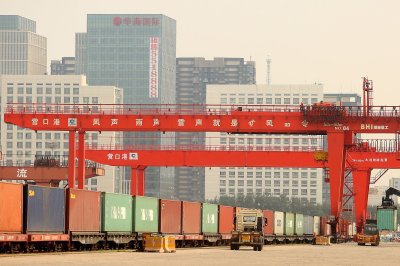Benidorm superfans, Roger and Sue Topp, have visited the Spanish beach resort more than 100 times – and this year they’re taking it a step further for their Christmas celebrations
Swapping Turkey for tapas and sprouts for sangria, one UK couple is set to spend Christmas Day in Benidorm – the Spanish seaside resort they’ve visited more than 100 times.
Roger and Sue Topp, from Leicester, have been travelling to Benidorm for more than 35 years and said they practically raised their children there, as it became their “second home.” Roger explained: “We used to do UK holidays, but it was always a gamble with the weather, then we came to Benidorm once, and that was it.
“It’s friendly, clean, safe, and the value is unbelievable. You can get a glass of wine for one to two euros and a full meal for less than you’d spend on a takeaway back home.” In the eyes of the couple, there’s nowhere else that quite compares to Benidorm with its sunshine, entertainment and community.
So much so that they visit the beach town around three times a year, flying from East Midlands Airport, and spend a lengthy period of time during the brisk British winter months. The couple stay at the popular Hotel Rio Park, located just a short 10-minute walk from Benidorm’s lively main strip, and this year it’s where they’ll be spending Christmas.
The couple, who have been married for 55 years, will fly to Benidorm on December 23, which impressively, will be their eighth visit this year alone. Their favourite buffet is already on the agenda, ditching the Brussels sprouts altogether, and they already plan to FaceTime their families at home, before celebrating in the winter sun.
“The first time we tried Christmas over there, we were blown away. The Rio Park Hotel puts on a feast for us, its breakfast, a huge traditional Christmas lunch, entertainment all day, and you can have as much wine and beer as you like. It’s brilliant and takes away so much stress, that’s why we’ve always loved TUI holidays,” they said.
They added: “We just love the Hotel Rio Park, it has everything you need and it is so close to the beach, plus the staff are just amazing and have become lifelong friends”.
When they’re not lapping up the hotel’s facilities, Roger and Sue spend time soaking up the sunshine of one of the sprawling golden sand beaches or wandering around the Old Town. But a Chinese buffet called Puente De Oro, where they can “eat like kings”, is one of their personal highlights.
“We love the Chinese buffet out there, you can get plates piled high and unlimited drinks for 19 euros. The food is fresh, delicious and amazing value. We go there all the time, sometimes there are big groups of 20 of us who are Benidorm regulars,” they revealed.
Not to mention the extensive selection of Tapas they get to devour. “There is a Tapas bar called Zodiac right near the Rio Park Hotel, and it does the most delicious 6 plates of tapas and a bottle of wine for 9 euros. You really can’t beat that. We go back time and time again because the quality is amazing and it’s a great price.”
Having booked their trips to Benidorm with TUI on multiple occasions, they’re well-known at their local store and credit the team for making it so seamless. “We pop in for a chat or a cuppa. They always look after everything for us, and they’ve become like family,” said Roger.
TUI Travel Agent Cameron Morton, who works at the Hinckley store, has been helping the couple book their Benidorm trips for more than a decade. “They’ve been booking with us in-store for around 10 years and usually plan three trips at a time for the year ahead. They love the Rio Park and won’t go anywhere else, they always say it feels like a home from home and that they meet friends there every time,” Cameron shared.
“Benidorm is such a great value destination, with affordable hotels, food and entertainment, which is why it works so well as a destination with TUI.”
Despite visiting the Spanish resort more than 100 times, Roger and Sue have no intention of stopping their yearly trips, and they have nothing but praise for the destination. “Ignore the stereotypes. It’s one of the friendliest, best-value places you can visit, with something for every age and budget. If you don’t enjoy Benidorm, you’ve only yourself to blame,” they shared.
Do you have a travel story to share? Email webtravel@reachplc.com



